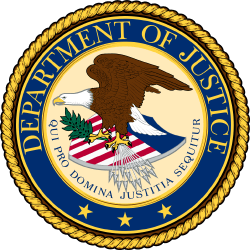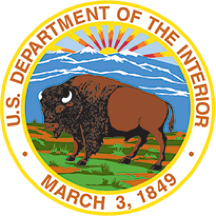IT warning banners: How GSA is working to stop unnecessarily frightening users
OMB Memo M-23-22 discourages the use of pop-ups and modals. GSA IT updated security policies so that IT warning banners are presented less intrusively to users.
The relevant laws, policies, and regulations for federal agencies.
Learn how to implement Section 508, and strengthen and maintain your agency’s commitment to digital accessibility.
Learn how to implement the DOTGOV Online Trust in Government Act and understand how to register federal internet domain names.
Learn how to strengthen and improve meaningful language access for all people in the U.S., regardless of the language they speak.
The Digital Experience (DX) Council plays a critical role in coordinating governmentwide efforts and assisting agencies in delivering digital experiences that meet the public’s needs and expectations.
Provides requirements and recommendations to support agency integration of digital accessibility into their missions and operations, helping government technology and information resources better serve a diverse public and federal workforce.
Guidance on meeting security requirements for federal websites.
What is an Authorization to Operate? Before you use software in government, you need to make sure it is allowed. You should know what an ATO is, and when you need one.
What do the control families of NIST 800-53 mean? Here’s an overview of the control families that create the foundation of federal security compliance.
Provides guidance to all federal agencies on the acceptable use and registration of Internet domain names as required by the DOTGOV Online Trust in Government Act of 2020.
Title IX of Public Law No. 116-260, §§ 901-907 (DOTGOV Act of 2020), which outlines responsibilities, authorities, duties, strategies, and requirements related to the process of creating top-level .gov domains, authorizes the Cybersecurity and Infrastructure Security Agency (CISA) to manage the domain registration process for federal, state, local, tribal, and territorial governments.
An online repository of policies, schema standards, tools, best practices, and case studies to provide agencies with resources for federal data management.
Guidance for federal agencies on IT accessibility compliance.
Get help with the PRA, planning and submitting an information request, and finding your agencies agency’s PRA contact.
Provides resources and collaborative opportunities to facilitate the use of prize competitions in government.
The Federal Risk and Authorization Management (FedRAMP) is a process that authorizes cloud products and services.
Create a better online experience for the public alongside government web content managers.
39 posts
OMB Memo M-23-22 discourages the use of pop-ups and modals. GSA IT updated security policies so that IT warning banners are presented less intrusively to users.
The summit highlighted digital transformation, emphasizing the significance of recent OMB memos for improving accessibility and customer experience.
The Federal Risk and Authorization Management Program (FedRAMP) has recently updated its governance structure to better serve its customers. Learn about their recently-formed FedRAMP Board, composed of federal executives; the FedRAMP Technical Advisory Group (TAG), composed of technology experts; and updates made to the Federal Security Cloud Advisory Committee (FSCAC). These groups collectively aim to strengthen and expand FedRAMP’s cloud service capabilities.— via FedRAMP

Each year, more than 400 million individuals, families, businesses, organizations, and local governments get information and services from about 430 federal agencies and sub-agencies. The Biden-Harris administration is driving a bold vision for how government agencies serve their customers digitally with OMB’s ten-year roadmap for a modern digital experience. Agencies have already made significant strides. Learn about recent successes by the IRS, CDC, NASA, and FEMA, and how OMB will continue to collaborate with agencies to ensure ongoing improvement in digital government services.— via The White House

On April 8, Attorney General Merrick B. Garland signed a final rule under Title II of the Americans with Disabilities Act (ADA) to ensure the accessibility of web content and mobile applications for people with disabilities. This final rule clarifies the obligations of state and local governments to make their websites and mobile applications accessible. Learn more about this rule and why the Attorney General believes it will “break down barriers that have kept people with disabilities from fully participating in American Life.”— via Department of Justice

The Biden-Harris President’s Management Agenda (PMA) emphasizes an effective, equitable and accountable government. As part of this effort, the General Services Administration (GSA) is conducting a study on the equity of remote identity proofing. The study aims to assess and improve the accessibility and equity of remote identity verification technologies such as facial matching systems. Learn more about the context, purpose, and progress of the study, and how it supports GSA’s goal of enhancing digital government services and prioritizing equitable design practices.— via Performance.gov

Best practices for security administration of control systems and their components. Specific guidance and lessons learned from a federal information system manager.
A quick-start user guide for information technology professionals to begin using overlays as a part of their regular security assessments.
OMB released new policy guidance for government that includes a variety of actions and standards to help federal agencies design, develop, and deliver modern websites and digital services. Memo M-23-22, Delivering a Digital-First Public Experience, will make it seamless for the public to obtain government information and services online, and help agencies fully implement the 21st Century Integrated Digital Experience Act (21st Century IDEA).— via The White House

Use GSA’s IT Accessibility Policy Framework to update digital accessibility language in your agency’s policies.
Measuring and Justifying the Government Experience—Private sector organizations use revenue as the primary measurement to justify improving experiences. Many government services don’t have revenue as a lever, so how can we justify work to improve experience? The Office of Natural Resources Revenue (ONRR) leveraged a few metrics on their team that fall into three categories: laws and regulations, improving the experience for users, and saving time for employees.— via Office of Natural Resources Revenue

The DOD released a policy that for the first time spells out, from the highest levels of the defense community, how DOD military and civilian personnel should use official social media accounts to best advance the mission of the U.S. military and further instill trust in the credibility of the DOD.
Modern digital services require a close connection between federal agencies and contractors, as well as customers and other stakeholders. Use these five practical tips to attract and empower contractors who value diversity, equity, inclusion, and accessibility.
Digital.gov
An official website of the U.S. General Services Administration